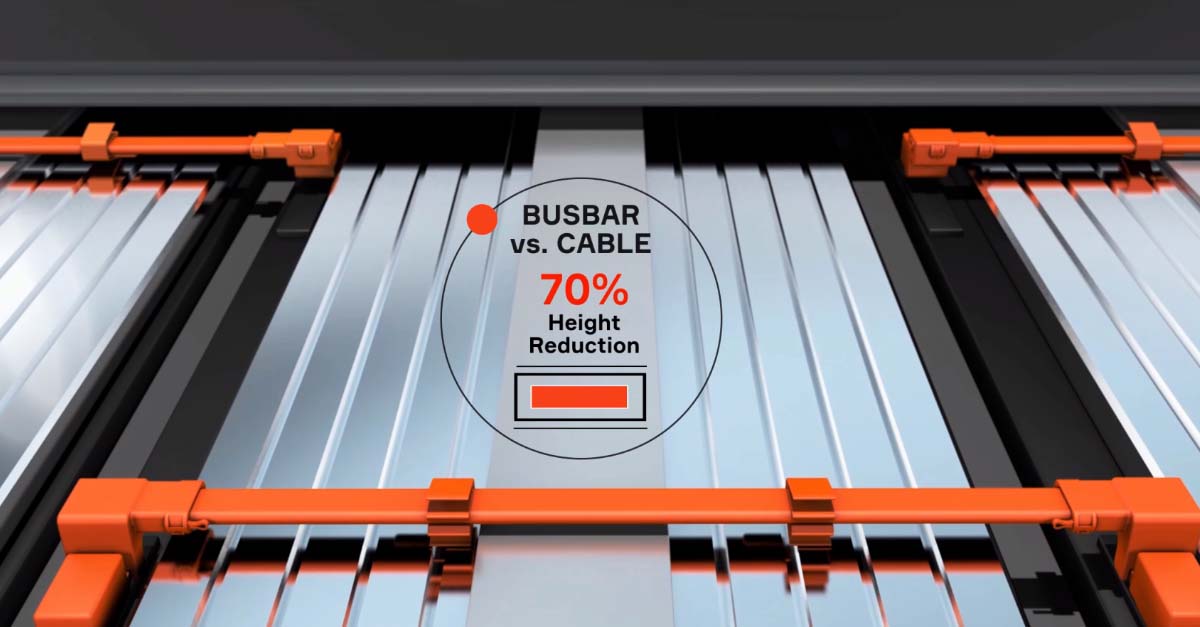What Is a Busbar?
Busbars are solid metal bars used to carry current. Typically made from copper or aluminum, busbars are rigid and flat — wider than cables but up to 70 percent shorter in height. They can also carry more current than cables with the same cross-sectional area. These attributes make busbars ideal for some high-voltage connections in electric vehicles (EVs) and a key component of the electrical architectures of tomorrow’s vehicles.

Busbar drivers
The first factor driving busbar adoption is the lack of space within today’s vehicles. Every sensor, actuator and electric/electronic device in a vehicle requires power and data lines, along with all of the packaging space that goes with them. Because busbars do not sit as high as cables do, their lower-profile routing leaves room for other electrical content. They can also be formed at angles more tightly and more precisely than a cable can bend, fitting closely to vehicle profiles.
The second factor is the need for automated assembly. Even though much automotive assembly has become automated, installing wiring continues to be a largely manual task. The flexibility that has made cabling ubiquitous can make it very difficult for a robotic arm to hold a wiring harness and place it correctly in a vehicle. In contrast, it is much more straightforward for a robot to move a rigid busbar into place. Automated assembly is less expensive from a labor standpoint, it enables higher quality, and it is also safer, given that EVs operate at high power and can expose assembly workers to powerful electric currents.
The third factor driving adoption is that busbars can carry more current because of their shape. OEMs are looking to increase power to their EVs’ batteries to reduce charging times, and a busbar can support up to 15 percent more power than a cable with the same cross-sectional area. In addition, the larger surface area of a busbar dissipates heat more efficiently than a cable over its entire length — another advantage as OEMs seek to increase power levels.
Looking forward
Today, busbars are already proving to be valuable as battery interconnects, linking the short distances between battery cell modules in modern EVs. As busbars expand beyond the battery, OEMs must weigh design decisions in the context of their full electrical/electronic architectures. The architecture will determine whether to use busbars, where to put them, how to connect them to other components, and where to add shielding or flexibility.
Busbars are integral to Aptiv’s Smart Vehicle Architecture™ vision for tomorrow’s vehicles, which couples busbars with a modular zonal architecture and our Dock & Lock™ connection system to simplify the overall design and enable more automated assembly.